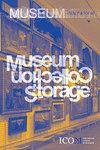仓储债:“技术债”理论模型在博物馆仓储管理中的应用
IF 0.4
4区 艺术学
0 ART
引用次数: 0
摘要
摘要最近的许多研究已经确定了世界各地博物馆存储设施比例较高的关键问题。此类研究中发现的问题通常通过雄心勃勃的翻新项目或通过重组现有资源来解决。本文以五家西班牙博物馆为例,探讨了“存储债务”的新概念。存储债务是指产生上述关键条件的累积过程和因素,这些条件的逆转成本相当高,并对博物馆的多个层面的活动产生不利影响。存储债务概念产生于“技术债务”(在软件开发行业创造)的理论框架,并应用于博物馆领域。前一个概念指的是在短期内解决需求的行动和决定,但在未来产生的背景使核心活动具有挑战性,其解决需要额外的努力和资源。本文将债务理论引入博物馆学科,定义了概念,描述了博物馆存储环境中积累的债务,并确定了博物馆可以在其收藏环境中解决问题的策略。让存储债务的积累变得可见,提高了人们对博物馆运营所需额外成本的认识,也提高了人们对于其对藏品价值的潜在影响的认识。从这个意义上说,这个概念可以促进与不熟悉博物馆管理技术层面的博物馆合作伙伴的沟通,比如赞助人或赞助商。同样,当与风险分析相结合时,存储债务的概念可以从危机模型转向预测模型:一个在制度上更可行、更可持续的模型。本文章由计算机程序翻译,如有差异,请以英文原文为准。
Storage Debt: Applying the Theoretical Model of ʻTechnical Debt' to the Management of Museum Storage
Abstract Numerous recent studies have identified critical issues with a high percentage of museum storage facilities around the world. The problems detected in such studies are usually solved with ambitious renovation projects, or through the reorganisation of existing resources. This article, drawing from the example of five Spain-based museums, explores the new concept of ‘Storage Debt’. Storage debt refers to the cumulative processes and factors that generate the critical conditions mentioned above, which are quite costly to reverse and which adversely affect museums’ activities at multiple levels. The storage debt concept arose from the theoretical framework of ‘technical debt’ (coined in the software development industry) and applied to the museum field. The former concept refers to actions and decisions that solve a need in the short term, but that in the future generate contexts that make core activities challenging and whose resolution involves extra efforts and resources. This article brings the theory of debt to the museum discipline by defining the concept, characterising the debt that accumulates in the context of museum storage and identifying strategies that museums can apply to solve the problem within the context of their collections. Making the accumulation of storage debt visible raises awareness around the additional cost that it implies for museum operations, but also around its potential effects on the value of collections. In this sense, the concept can facilitate communication with museum partners unfamiliar with the more technical aspects of museum management, such as patrons or sponsors. Likewise, when paired with risk analysis, the concept of storage debt makes it possible to shift away from a crisis model toward a predictive model: one that is more institutionally viable and sustainable.
求助全文
通过发布文献求助,成功后即可免费获取论文全文。
去求助
来源期刊

MUSEUM INTERNATIONAL
ART-
CiteScore
0.60
自引率
0.00%
发文量
0
期刊介绍:
In its new revised form Museum International is a forum for intellectually rigorous discussion of the ethics and practices of museums and heritage organizations. The journal aims to foster dialogue between research in the social sciences and political decision-making in a changing cultural environment. International in scope and cross-disciplinary in approach Museum International brings social-scientific information and methodology to debates around museums and heritage, and offers recommendations on national and international cultural policies.
 求助内容:
求助内容: 应助结果提醒方式:
应助结果提醒方式:


